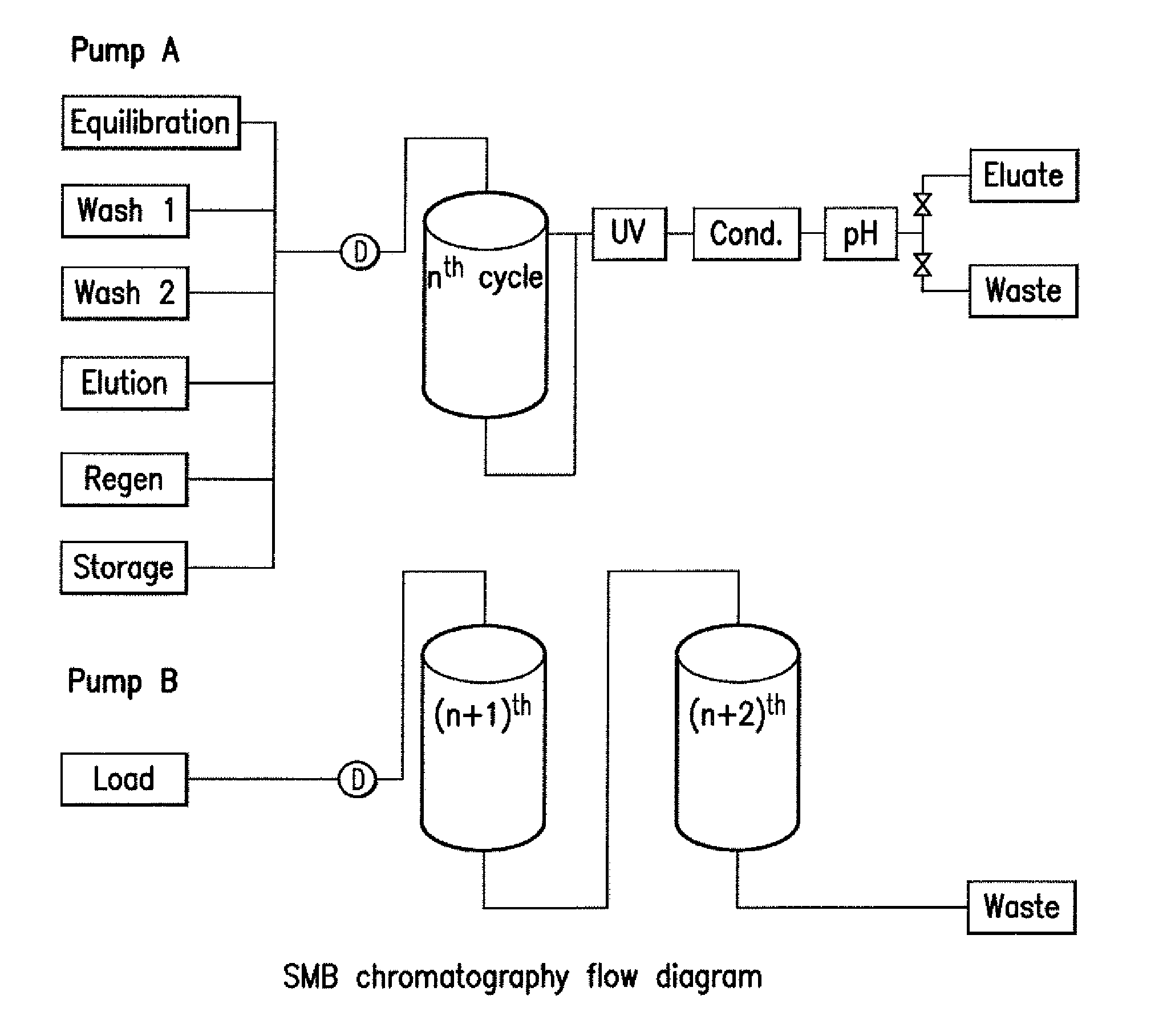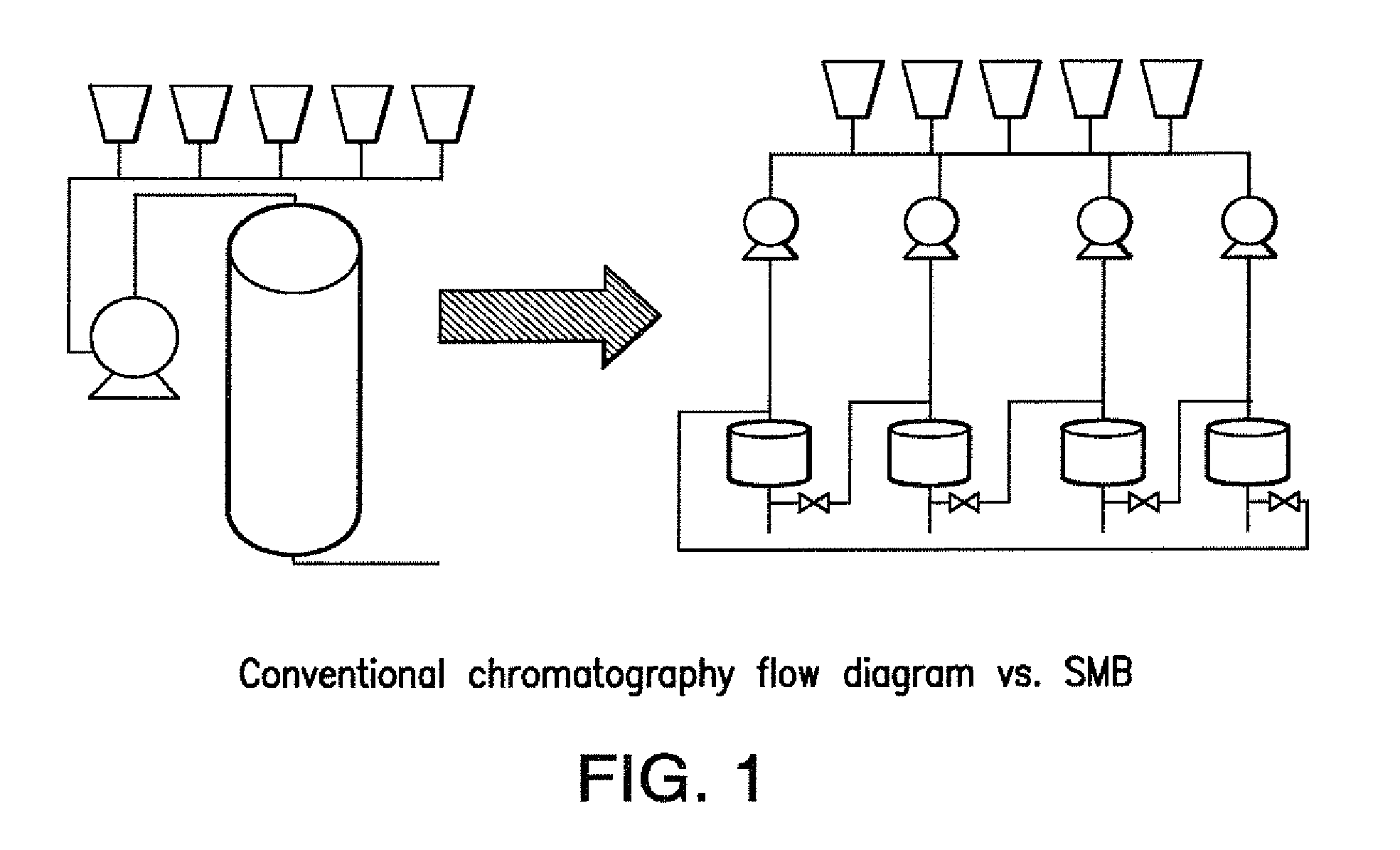Purification of antibodies using simulated moving bed chromatography
a technology of moving bed and chromatography, which is applied in the direction of peptides, peptide/protein ingredients, separation processes, etc., can solve the problems of significant increase in wash and elution buffer, and the cost of protein purification. , to achieve the effect of elution buffer, and elution buffer, and increasing the amount of equilibration
- Summary
- Abstract
- Description
- Claims
- Application Information
AI Technical Summary
Benefits of technology
Problems solved by technology
Method used
Image
Examples
case study mab
6.2. Case Study mAb Y
[0152]A case study was performed using an mAb Y process intermediate as the feed stream, and a typical agarose-based affinity Protein A chromatography media as an affinity chromatography resin. A total of eight cycles were performed with four columns. The columns were each loaded to saturation and FIG. 6 shows the resulting chromatogram. The even-number UV peaks indicate elution and the odd-number UV peaks indicate wash 1 immediately after loading.
[0153]These buffers were used for all SMB runs:
LinepositionsBufferEquili / Wash 1350 mM Tris, pH 7.2Wash 2 25 mM Tris, pH 7.2Elution100 mM Na Acetate, pH 3.5Regeneration200 mM Acetic AcidStorage 50 mM Na Acetate, pH 5.0, 2% benzyl alcohol
[0154]The following tables outline the SMB purification program for mAb Y. There are three parts of program: 1st run, 2nd to (n−1)th run, and the last run. The Load 2 block was calculated by the area-under-curve (AUC) of the saturated binding capacity (SBC) study (see below). The wash 1,...
PUM
| Property | Measurement | Unit |
|---|---|---|
| Fraction | aaaaa | aaaaa |
| Fraction | aaaaa | aaaaa |
| Fraction | aaaaa | aaaaa |
Abstract
Description
Claims
Application Information
 Login to View More
Login to View More - R&D
- Intellectual Property
- Life Sciences
- Materials
- Tech Scout
- Unparalleled Data Quality
- Higher Quality Content
- 60% Fewer Hallucinations
Browse by: Latest US Patents, China's latest patents, Technical Efficacy Thesaurus, Application Domain, Technology Topic, Popular Technical Reports.
© 2025 PatSnap. All rights reserved.Legal|Privacy policy|Modern Slavery Act Transparency Statement|Sitemap|About US| Contact US: help@patsnap.com



